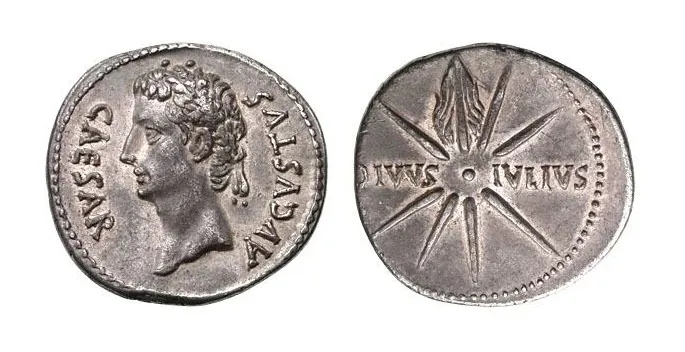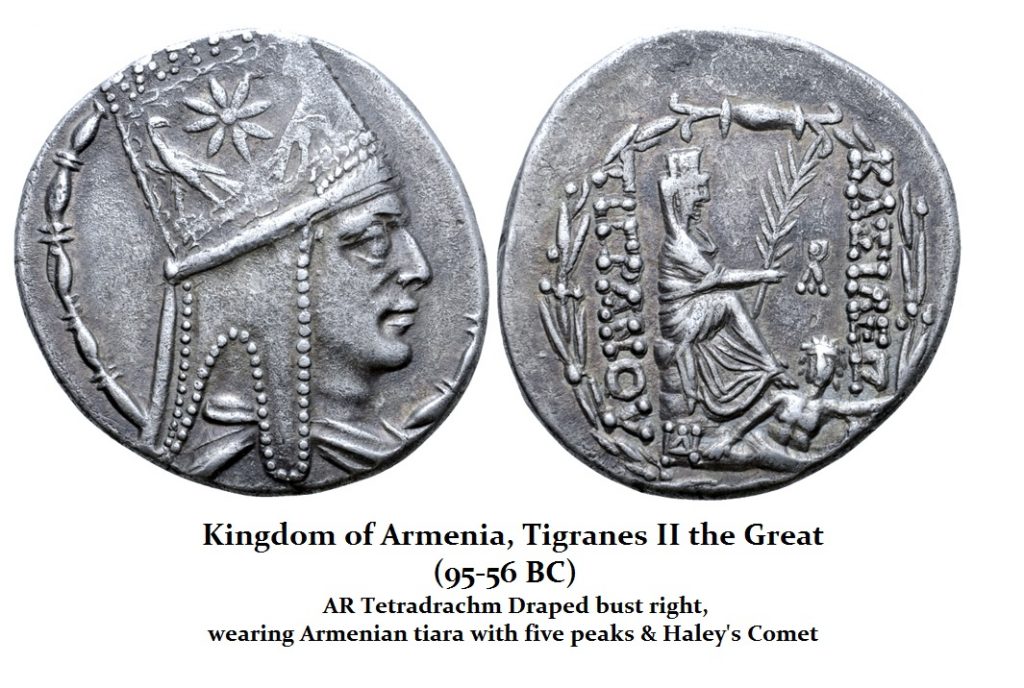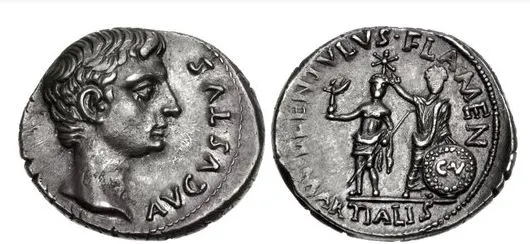Comets as Omens & Star of Bethlehem
QUESTION: Mr. Armstrong; The ancients seem to have attributed the appearance of a comet to important events like the death of Julius Caesar and the birth of Christ. Did the Romans record comets on their coinage and omens of the future? Was either the famous Haley’s Comet? Some say the Star of Bethlehem was Haley’s Comet.
Thank you and have a Merry Christmas
PD
ANSWER: Yes. The appearance of a comet at the time of Julius Caesar’s death promoted his divinity for political purposes. His nephew Octavian, later to be given the name Augustus by the Senate (27BC-14AD), issued coins with the comet that appeared at the time of Caesar’s death with the legend: DIVVS IVLIVS (Divine Julius). This was self-serving and used as justification of his rule as the first Emperor of Rome beginning the Imperial Era. But that was not Haley’s Comet.
Halley’s Comet has been recorded as early as 467BC by the Greeks. The Chinese chroniclers also mention a comet during this year. However, the Chinese astronomer Shiji also recorded its appearance in 240BC. The Babylonians recorded its appearance in of 164BC in two clay tablets in the British Museum. Again, the Babylonians recorded its appearance once more in 87BC. It was this appearance that lasted for about one month was celebrated on the coinage of Tigranes II the Great, an Armenian king who is depicted here on coins with a crown and a curved tail. It was portrayed as ushering in a New Era of the brilliant King of Kings. Tigranes II the Great issued the earliest coin depicting Haley’s Comet which is represented by the star in his crown.
Haley’s Comet appeared around 12 BC and it was recorded in the Book of Han by Chinese astronomers of the Han Dynasty. They tracked it from August through October during 12BC. According to the Roman historian Cassius Dio, a comet appeared almost suspended over Rome for several days at the time of the death of Marcus Vipsanius Agrippa who was Augustus’ close friend. He issued a coin depicting Agrippa with a comet above his head.
There has been considerable debate about whether Halley’s Comet was also the Star of Bethlehem. The appearance in 12 BC, is not that distant from the conventionally assigned date of the birth of Jesus Christ which has a range of 6AD to 4AD. This is based mostly on the biblical story of Herod the Great. Not long before Herod’s death, which is generally attributed to have occurred in 4BC but even that is in dispute.
Referencing the Haley Comet connection, some theologians and astronomers have also to suggested that this might explain the biblical story of the Star of Bethlehem and provide a more documented confirmation of his birth coinciding with the time of the death of Agrippa. However, there are also records of other comets that appeared closer to the date of Jesus’ birth. In a 1991 article in the Quarterly Journal of the Royal Astronomical Society, astronomer Colin Humphreys proposed that the Star of Bethlehem was actually a slow-moving comet, which Chinese observers recorded in 5 BC.
Then there is a third theory put forth in 2008 by the astronomer Dave Reneke who argued that Jesus was born in the summer. The Star of Bethlehem, Reneke argued, may actually have been not a comet at all but Venus and Jupiter coming together to form a bright light in the sky. He used computer models to determine that this extremely rare event occurred on June 17, in the year 2 BC and would have appeared as a bright star for that one moment. Others have argued that a very similar conjunction took place between Saturn and Jupiter during October of 7 BC. Then we have others who disagree and say that Jesus must have been born during the spring, based on the biblical narrative that shepherds were watching over their flocks in the fields. That, they argue, takes place during the Spring and not winter.
The Jewish historian Josephus tells us:
“So Herod, having survived the slaughter of his son [Antipater] five days, died, having reigned thirty-four years, since he had caused Antigonus to be slain, and obtained his kingdom; but thirty-seven years since he had been made king by the Romans.” [War of the Jews, 1:33:8 (665); cf. Antiquities of the Jews 17:8:1 (191)]
Therefore, Josephus is providing key target dates for Herod’s death correlating three events:
Five days after the execution of his son Antipater.
Thirty-four years after he “obtained his kingdom” referring to his conquest of Jerusalem
Thirty-seven years after “he had been made king by the Romans.”
Now, for more than 100 years, the question of when Herod the Great died has been dominated by a proposal by the German academic Emil Schurer. It was Schurer who argued that Herod died in 4 BC, and this view has remained the accepted date in scholarly circles. Therefore, if we look at Josephus, it would make more sense that Herod died in 1 BC based on the amount of time he served after being appointed king by the Romans. There was also a lunar eclipse that occurred before Passover in 1BC. We can even focus in more specifically, for Herod the Great would have died between January 10, 1 B.C. (the date of the lunar eclipse) and April 11, 1 B.C. (the date of Passover). If we take Josephus’ clue of the conquest of Jerusalem, then we would arrive at either 2BC or 1 BC based on the amount of time he served after his conquest. Consequently, I would not assume it likely that Haley’s Comet appeared for the birth of Christ.
As I have stated, December 25th was the fest of Sol which was transformed into Christmas. What we do know is that the oldest existing record of a Christmas celebration is found in a Roman almanac that tells of a Christ’s Nativity festival led by the church of Rome dating back in 336 AD.




